Inline skates are generally easier for beginners than ice skates. Why? Inline skates have a wider, stable base (thanks to their multiple wheels) and can be used almost anywhere - sidewalks, parks, or indoor rinks. Ice skates, on the other hand, require precise balance on narrow blades and are limited to ice surfaces, which often means access to a rink.
Here’s the quick breakdown:
- Inline Skates: Easier to balance, forgiving for beginners, and usable year-round on smooth, paved surfaces.
- Ice Skates: Require more precision, harder to balance, and limited to ice rinks or frozen surfaces.
If you’re looking for something completely different, Snowfeet offers a fun winter alternative. They combine elements of skating and skiing, work with regular winter boots, and can be used on snowy hills, parks, or even your backyard. They’re compact, easy to learn, and priced between $145 and $775 depending on the model.
Quick Answer: Start with inline skates for an easier learning curve. Ice skates are more challenging but rewarding if you’re into winter sports. And if snow is your playground, Snowfeet might be worth a try.
INLINE vs ICE SKATING .. Differences Explained
How Hard Each Type Is to Learn
Inline skates and ice skates each bring their own set of challenges for beginners. Factors like surface, design, and stopping techniques play a big role in how quickly someone can pick up the basics. Let’s break it down.
Inline Skates: Easier to Balance and Control
For beginners, inline skates tend to be more forgiving. Thanks to their design - multiple wheels in a line - they offer a wider base, making it easier to stay balanced. The rubber wheels also grip smooth surfaces well, giving you a sense of stability. When it comes to stopping, techniques like the heel brake or T-stop are relatively straightforward, making it easier for learners to practice in a variety of settings, from sidewalks to indoor rinks.
Ice Skates: Precision and Balance Required
Ice skating is a whole different ballgame. Balancing on a thin metal blade, usually about 1/8 inch wide, requires a lot more precision. The uneven texture of ice can make staying in control even harder. Stopping isn’t as intuitive either - techniques like the snowplow stop often feel awkward at first and take time to master. Ice skating also demands strong ankle control, as even small shifts in weight can lead to big changes in movement.
Side-by-Side Learning Comparison
| Factor | Inline Skates | Ice Skates |
|---|---|---|
| Balance | Easier – multiple wheels create a stable base | Harder – narrow blades require precise balance |
| Surface Predictability | High – smooth, consistent surfaces | Low – ice can be uneven and unpredictable |
| Stopping Methods | Simple – heel brake and T-stop are intuitive | Complex – snowplow and other stops need practice |
| Learning Environment | Flexible – can practice almost anywhere | Limited – usually confined to ice rinks |
Inline skates generally provide a smoother learning curve, especially for beginners working on balance and control.
This is where Snowfeet* steps in, blending the best features of both skating worlds. Snowfeet* combines the accessibility of inline skating with the excitement of winter sports. Unlike bulky ski gear from brands like Rossignol or K2, Snowfeet* offers a compact, easy-to-use alternative for enjoying snowy adventures. It’s a fresh way to experience the season without the hassle of traditional equipment.
Balance and Control Differences
Let’s dive deeper into how balance and control impact the learning experience, especially for beginners. Each type of equipment has its own quirks that shape how you get started.
Inline Skates: Stable and Easy to Maneuver
Inline skates are known for their stability. Their wide base and high-boot design make it easier for beginners to shift their weight naturally, which helps them nail those first turns. The continuous rolling motion also adds a layer of steadiness, making it less intimidating to recover from small mistakes. This setup minimizes the chances of injury early on. Compared to ice skates, inline skates feel a lot more forgiving.
Ice Skates: Precision Is Key
Ice skates are a whole different ballgame. Because they have such a narrow contact area, even the tiniest weight shifts can throw you off balance. Beginners have to focus on developing precise movements right from the start. Turning on ice skates involves mastering the inside and outside edges of the blade, which adds to the challenge. It’s a steeper learning curve, but once you get the hang of it, it’s incredibly rewarding.
Snowfeet*: Balance Made Simple
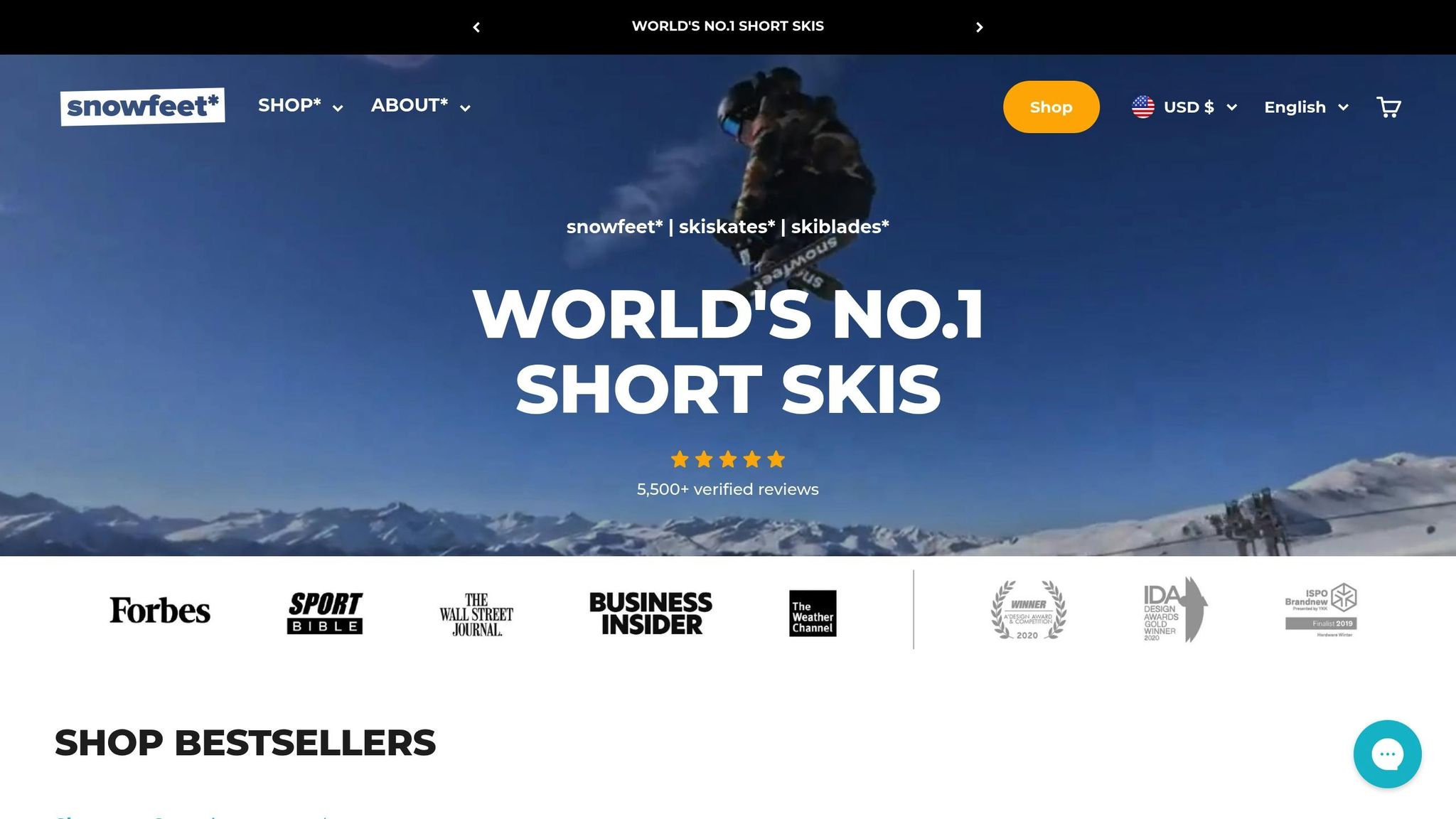
Snowfeet* changes the game when it comes to balance. Unlike traditional ski gear from brands like Salomon or Atomic - which often require special boots and complicated bindings - Snowfeet* works with your regular winter shoes or snowboard boots. The 44 cm Skiskates, starting at $575, offer a wider and more stable platform that’s designed specifically for snow. This setup combines the steady feel of inline skates with the adaptability you need for winter terrains.
Thanks to their broader base, Snowfeet* makes balancing feel natural, even for beginners. You don’t need perfect technique to get started, and many users say the learning curve is way easier compared to ice skating or skiing. For newcomers, the 38 cm Mini Ski Skates, starting at $250, are a fantastic option. They’re lightweight, easy to control, and great for building confidence. These features mirror the stability of inline skates while adding the freedom to explore snowy environments.
What really sets Snowfeet* apart is the flexibility it offers. You’re not tied to an ice rink or a ski resort. With Snowfeet*, any snowy hill, park, or even your backyard can become your playground. It’s about making winter sports accessible and fun, no matter where you are.
sbb-itb-17ade95
Practical Factors: Access, Safety, and Money
When deciding between inline skates, ice skates, and Snowfeet* products, it's important to think about practical aspects like how easy they are to use, how safe they are, and how much they cost. These factors can make a big difference, especially for beginners.
Inline Skates: Freedom to Roll Anytime
Inline skates are super convenient because you can use them almost anywhere. Sidewalks, bike paths, parking lots, or even dedicated skating trails - your options are wide open, and you’re not tied to specific hours or locations. A decent pair of inline skates, along with protective gear like helmets and pads, won’t break the bank either. However, the narrow wheel design can be tricky for beginners to balance on, which might make the learning curve a bit steeper. Compared to inline skates, ice skates come with more restrictions tied to season and location.
Ice Skates: Fun but Limited by Season
Ice skating is a classic winter activity, but it does come with its own set of challenges. Access can be an issue since you need a rink, and recurring costs like admission fees and skate rentals can add up quickly. While falling on ice might be a bit gentler than hitting hard pavement, you’re still limited by the need for a specific venue. These limitations make it less accessible and can influence your choice of gear - this is where Snowfeet* steps in with a unique solution.
Snowfeet*: Affordable Winter Fun, Anywhere There's Snow
Snowfeet* brings something different to the table, addressing the limitations of both inline and ice skates. With Snowfeet*, you get the flexibility to enjoy winter sports on any snowy surface - whether that’s a park, a hiking trail, or even your backyard. You don’t need pricey lift tickets or resort access like you would with traditional ski equipment from brands like Salomon or Atomic.
Snowfeet* products are also budget-friendly, with options for everyone. For instance, the Snowfeet* 38 CM Mini Ski Skates (The Original, Fiberglass Core) are priced at $145 (down from $170). If you’re looking for a more premium option, the Snowfeet* 44 CM Skiskates (Snowblades Skiboards Mini Skis, Wood Core) start at $455 (regularly $490).
The Snowfeet team emphasizes affordability and simplicity, saying:
"Snowfeet* basic is the most affordable model we offer. This model is recommended for people who are willing to sacrifice higher quality for a lower price."
One of the standout features of Snowfeet* is how easy they are to learn. They’re described as having a "really fast learning curve", which makes them beginner-friendly and safer to pick up. Maintenance is straightforward too - just occasional waxing and tuning will keep them in great shape. And because all you need is snow, you can enjoy Snowfeet* all winter long without worrying about finding a rink or a smooth path.
How to Pick the Right Option
Think About Your Goals and Where You Live
Choosing the right skating style starts with your goals and where you plan to skate.
If you're into fitness or just love cruising outdoors, inline skates are your go-to. They thrive on paved paths, city streets, and skateparks, making them perfect for dry, temperate climates. Plus, they handle rough surfaces well and are great for activities like speed skating, roller hockey, or pulling off tricks. Their speed and agility are a big draw for experienced skaters.
Ice skates, on the other hand, are ideal if you have access to indoor rinks year-round or live in colder regions with seasonal outdoor rinks. For beginners, figure skates are often a solid choice due to their flatter blade and lower center of gravity, which makes balancing easier. Hockey skates, however, are built for quick movements and responsiveness, fitting for those who want to up their game on the ice.
That said, both inline and ice skates have their limits when it comes to seasons and terrain. This is where Snowfeet* steps in, offering a versatile option that works on any snowy surface - from ski slopes and snowparks to simple hiking trails.
Why Snowfeet* Changes Everything
Snowfeet* flips the script on winter sports by tackling the challenges of cost, bulk, and accessibility. Unlike traditional skiing, which often requires pricey lift tickets, heavy gear, and resort access, Snowfeet* lets you enjoy the snow with much less hassle.
Here’s why Snowfeet* stands out:
- Lightweight and compact: Forget about lugging around bulky equipment. Snowfeet* works with your regular winter boots, making it easy to gear up and go.
- Fast learning curve: Many users rave about how quickly they picked it up. With ratings between 4.9/5 and 5.0/5, it’s clear that Snowfeet* is beginner-friendly and safer to learn compared to traditional skiing.
- Affordable: Traditional ski gear can cost thousands. Snowfeet* offers options like the 38 CM Mini Ski Skates for $250, the 120 CM Short Skis for $775, and the premium 44 CM Skiskates for $575 - prices that are far more accessible than most ski setups.
- Low maintenance: Caring for Snowfeet* gear is easy - just occasional waxing and tuning. No need for expensive trips to the ski shop.
Snowfeet* is also shaking up the idea that longer skis are always better. Their shorter, innovative design proves you can still have an incredible time on the slopes while enjoying more freedom and flexibility.
For anyone living in snowy areas or looking for a winter activity that doesn’t rely on resorts, Snowfeet* turns any snowy spot into your personal playground. It’s a fresh way to experience the season without breaking the bank - or your back lugging gear.
Final Answer: Which Is Easier?
What We Found: Inline vs. Ice Skates
After looking at the learning curves, balance challenges, and practical factors, we found that inline skates are generally easier for beginners. The wider wheelbase provides a stable platform, making them more forgiving compared to the narrow blades of ice skates. Plus, you can practice on almost any paved surface, which helps build muscle memory and confidence at your own pace.
Ice skates, on the other hand, demand precise balance on those thin blades. Beginners often struggle with wobbling and frequent falls during their first attempts. Add to that the seasonal restrictions and the need for rink access, and it becomes harder to practice consistently. And let’s not forget - neither inline skates nor ice skates are practical when snow blankets the ground, leaving you searching for other winter-friendly activities.
This is where Snowfeet* steps in to fill the gap.
Snowfeet*: A New Way to Enjoy Winter
Snowfeet* brings a fresh twist to winter sports by combining the best parts of skating and skiing. The learning curve is surprisingly quick - even for total beginners - thanks to their added support and stability.
What’s more, Snowfeet* are shorter and lighter than traditional ski gear, making them easier to control and less tiring during long sessions.
They’re incredibly versatile, too. Whether you’re on slopes, snowparks, trails, or just your local hill, Snowfeet* let you enjoy skiskating and cross-country-style skiing. And here’s the kicker: you can use them with your regular winter shoes or snowboard boots. That means no need for the specialized footwear required by inline or ice skates. This challenges the common belief that longer gear equals better performance, proving that compact, maneuverable equipment can deliver just as much fun - while being more accessible to a broader audience.
So, while inline skates might be the easier choice for beginners, Snowfeet* offers an exciting, game-changing alternative that sidesteps the limitations of both inline and ice skates.
FAQs
Which is easier to learn: inline skating or ice skating?
Inline skating and ice skating each come with their own challenges, but the big differences are in balance and stopping techniques. With inline skates, the aligned wheels give you a more stable base, which makes it easier for beginners to get comfortable. Ice skates, on the other hand, require you to balance on thin blades, which can feel a bit trickier when you're just starting out.
Stopping is also handled differently. Ice skaters use the flat edge of their blades to slow down or stop, while inline skaters either use the inside edge of their wheels or a built-in brake. If you're looking for something that blends aspects of both sports, Snowfeet products, like Skiskates, offer a fun and flexible way to enjoy a mix of stability and versatility across different terrains.
Which is easier to learn: inline skating or ice skating?
Learning to skate can vary depending on what you’re aiming for and where you plan to skate, but inline skating tends to be the simpler starting point for most beginners. Why? Inline skates have a longer wheelbase, which makes balancing easier, and they’re ideal for smooth, dry surfaces like sidewalks or paved trails. Ice skating, however, is a bit trickier to pick up. Balancing on narrow blades takes some getting used to, especially if you’re new to gliding on ice.
If you’re stuck deciding between the two - or just want something that combines elements of both - Snowfeet products like Skiskates might be the perfect solution. They’re small, easy to pick up, and great for snowy terrain. Plus, they’re a fun way to dip your toes into something fresh and exciting if you’re just starting out.
Which is easier to learn: inline skates, ice skates, or Snowfeet*?
When deciding between inline skates, ice skates, and Snowfeet*, it really comes down to what kind of experience you’re after. Inline skates are a great starting point for beginners because their wheels provide solid stability, and they’re perfect for outdoor use. Ice skates, on the other hand, require a bit more finesse since you're balancing on a thin blade, plus you’ll need access to an ice rink or a frozen surface - so they can be trickier to get the hang of at first.
Snowfeet* bring something entirely different to the table. Think of them as a mix between skiing and skating. They’re small, lightweight, and super easy to carry around. You don’t need a ton of gear, and they’re a fun way to tackle snowy slopes or trails. If you’re after something versatile and exciting for winter adventures, Snowfeet* might just hit the sweet spot between traditional winter sports and skating fun.







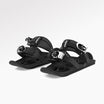
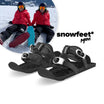
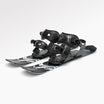
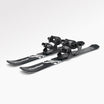

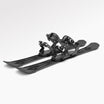

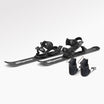








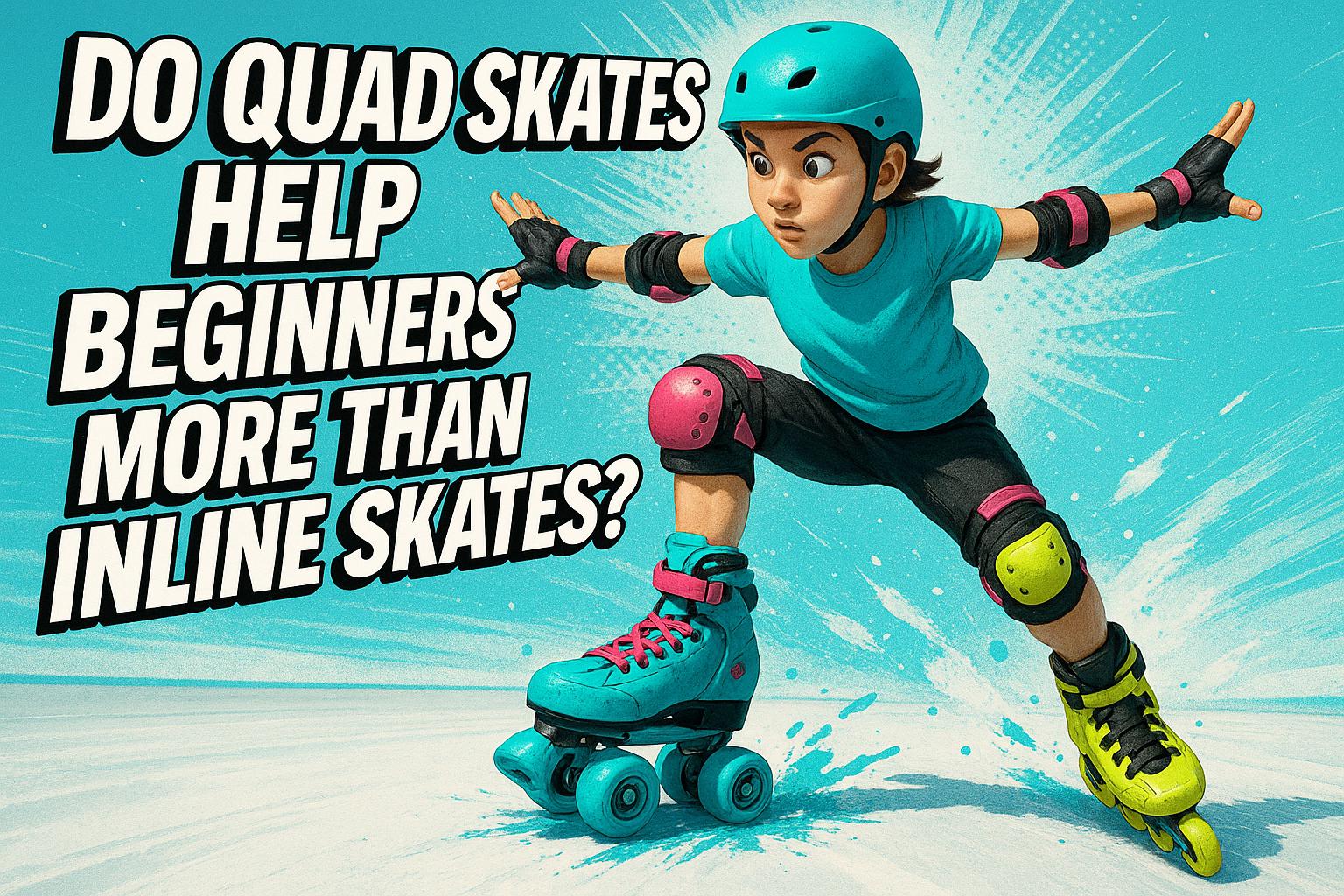




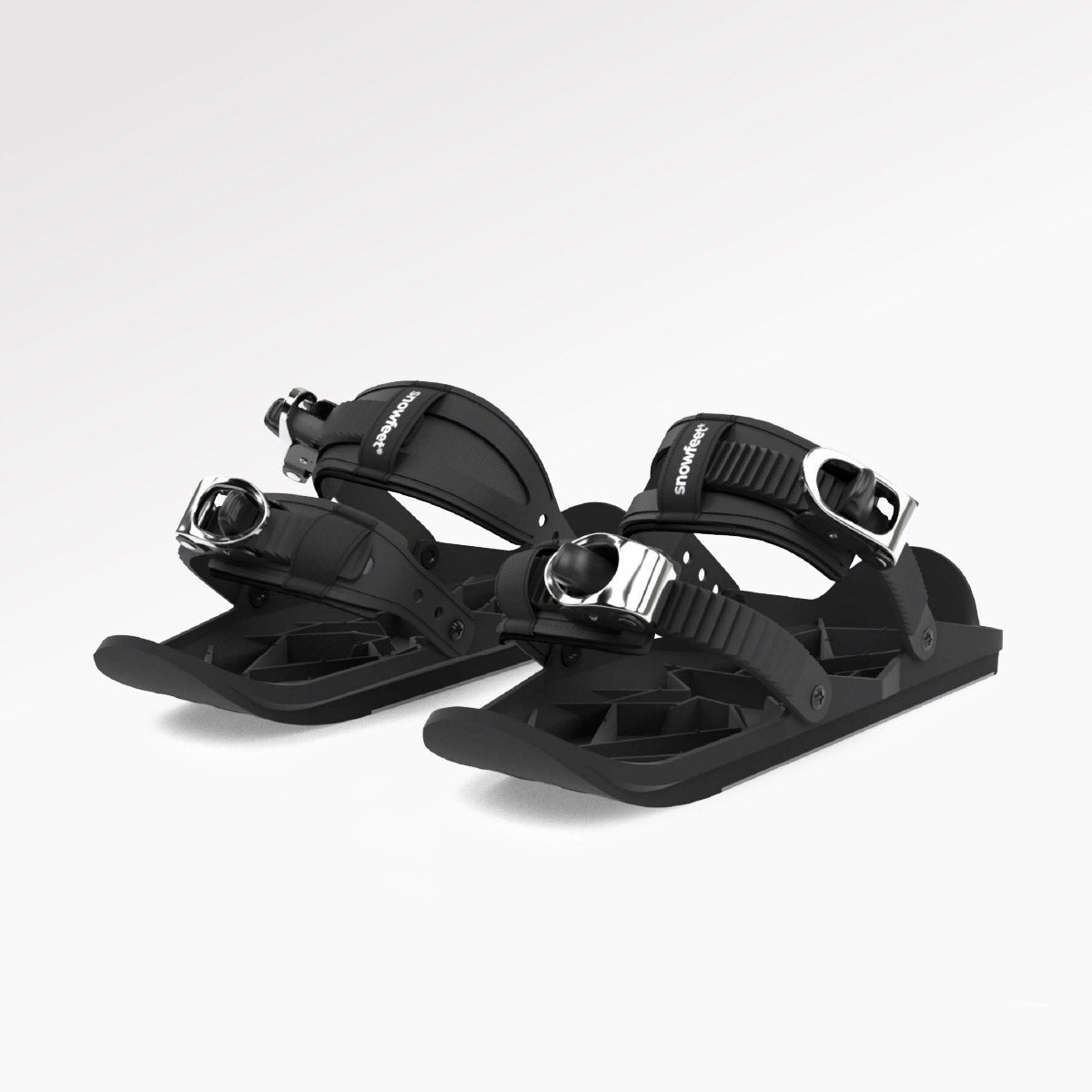
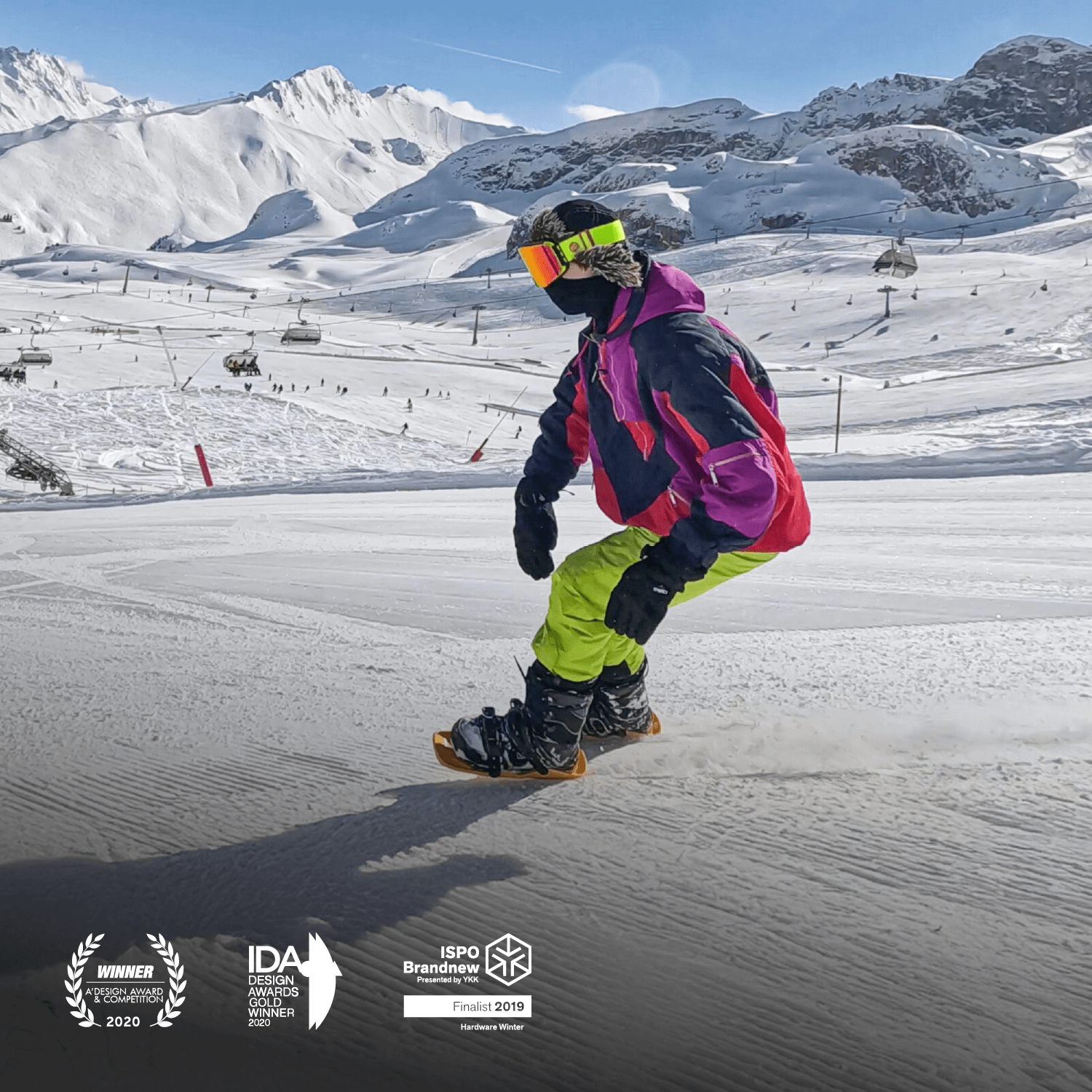
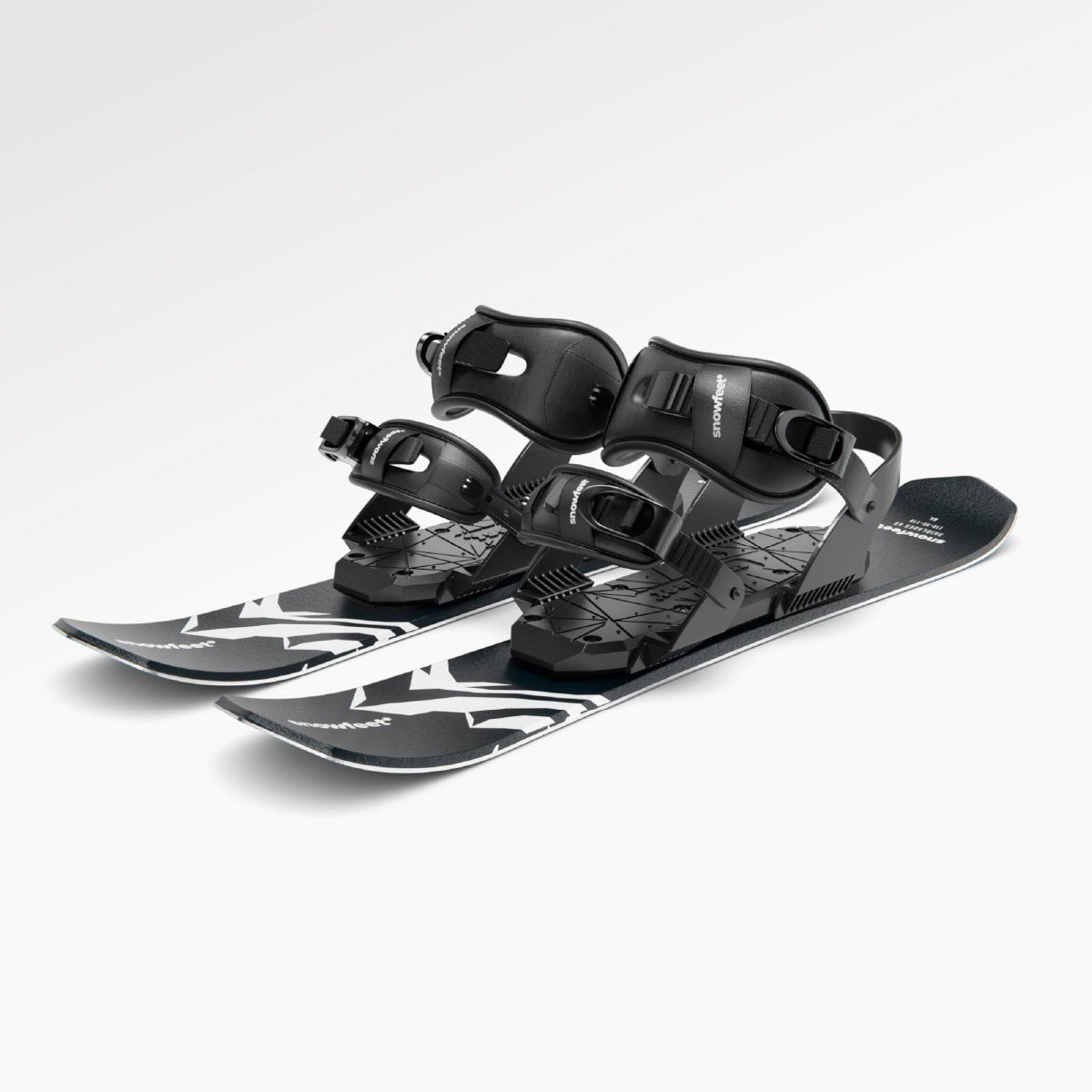

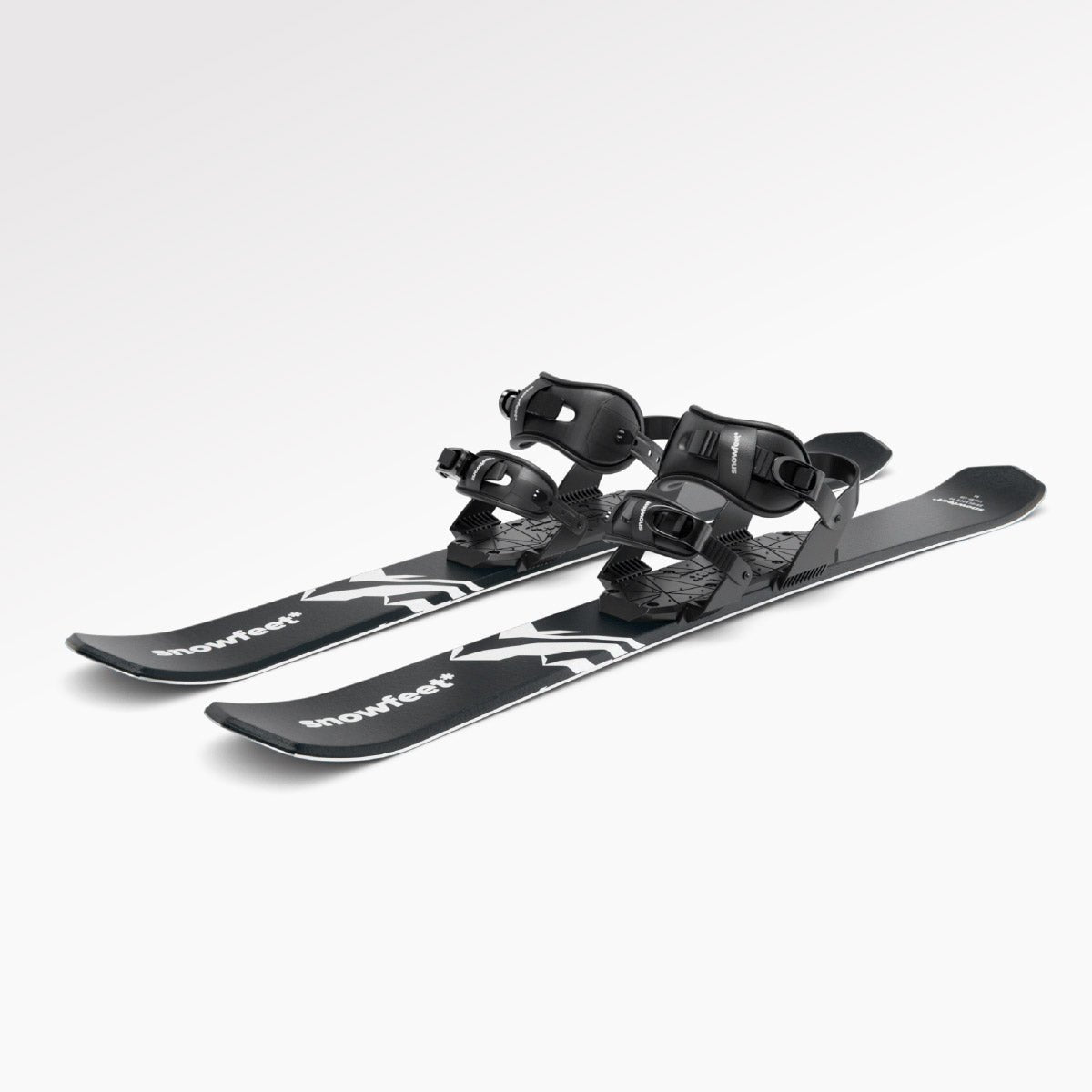

Hagyj egy hozzászólást
Ezt a webhelyet a hCaptcha rendszer védi, és a hCaptcha adatvédelmi szabályzata, valamint szolgáltatási feltételei vonatkoznak rá.